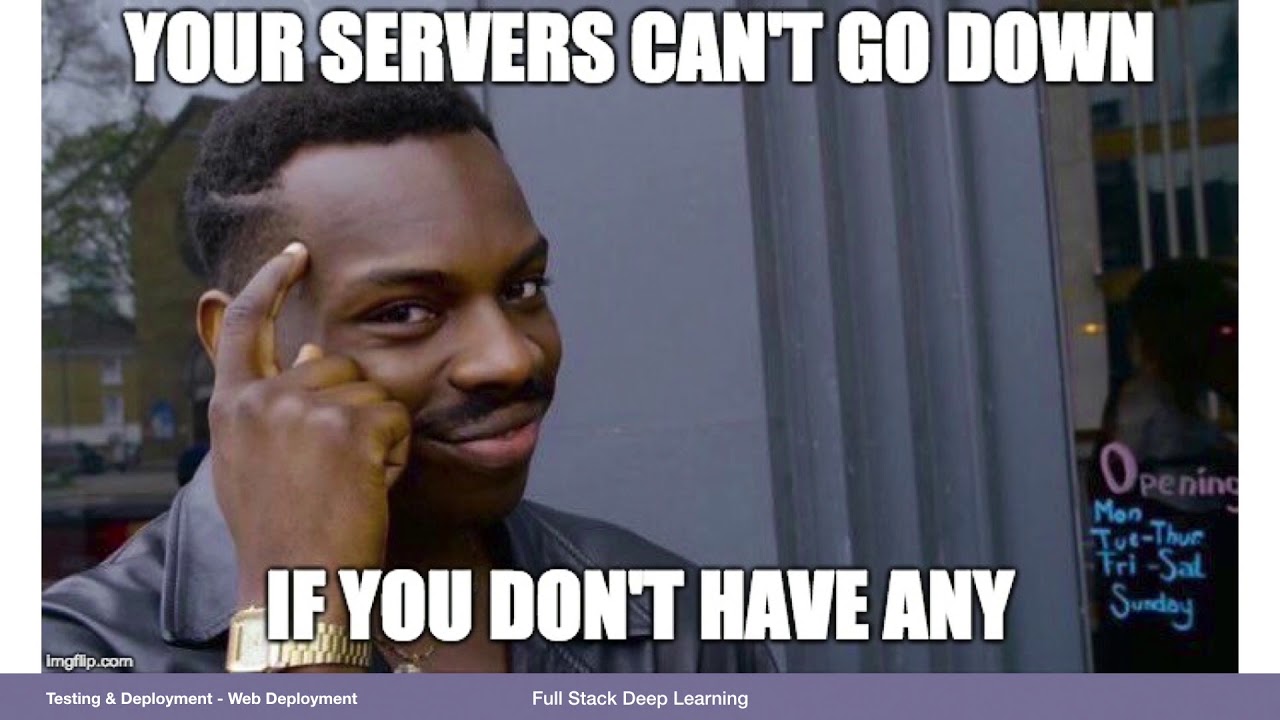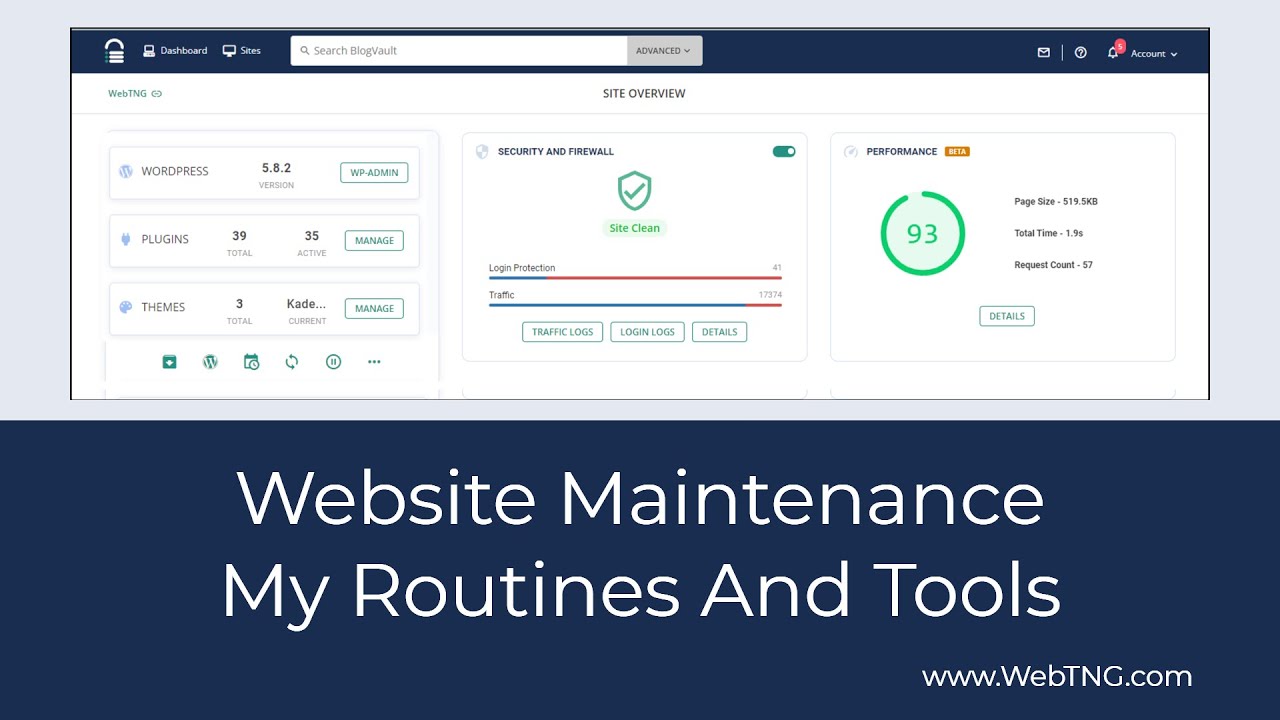In today's digital landscape, a strong online presence is essential for businesses, organizations, and individuals. A well-designed and functional website serves as the cornerstone of this presence. Website development, the process of creating, building, and maintaining websites, plays a vital role in establishing and enhancing online visibility. Whether you're a businessowner, an aspiring web developer, or someone looking to showcase your ideas, understanding the fundamentals of website developmentis crucial. In this article, we will explore the key aspects of website development, from planning and building to testing and maintenance, providing you with valuable insights and guidance.
Whether you're a businessowner, an aspiring web developer, or someone looking to showcase your ideas, understanding the fundamentals of website development is crucial. In this article, we will explore the key aspects of website development, from planning and building to testing and maintenance, providing you with valuable insights and guidance.
What Is Website Development?

What Is Web Development And It's Future | Web Development in 2022 | Web Development | Simplilearn
Website development refers to the process of creating, building and maintaining websites. It involves a combination of technical skills, design principles, and content creationto bring a website to life on the internet. Website development encompasses various tasks, including web design, front-end, and back-end programming, database management, contentcreation, and optimization.
During the website development process, developers utilize programming languages like HTML, CSS, and JavaScript to structure and style web pages. They may also use frameworks and content management systems (CMS) to streamline the development process and add functionality to the website.
Website development involves both the visual aspects of a website, such as layout, colors, and typography, as well as the underlying functionality and interactivity. This includes creating intuitive navigation, integrating forms and interactive elements, and ensuring a responsive design that adapts to different devices and screen sizes.
Moreover, website development includes optimizing the website for search engines (SEO), ensuring it loads quickly, and implementing security measures to protect user data.
Why Is Website Development Important?

Why Web Development should be your First Choice.
Website development is important for several reasons:
- Online Presence- In today's digital age, having an online presence is crucial for businesses and individuals. A well-developed website serves as a virtual storefront, allowing you to showcase your products, services, or ideas to a global audience. It establishes credibility and enables potential customers or visitors to find and connect with you.
- Brandingand Identity- A professionally designed and developed website helps build your brand identity and reputation. This involves working with the best web design companies in NYCto ensure that your brand is presented consistently, with a cohesive design, colors, and messaging that reflect your values and unique selling proposition. A well-branded website enhances recognition and sets you apart from competitors.
- Enhanced User Experience- Website development focuses on creating a positive user experience. By designing intuitive navigation, optimizing page loading speed, and ensuring responsiveness across devices, you provide visitors with a seamless and enjoyable browsing experience. A user-friendly website encourages engagement, increases time spent on the site, and improves conversion rates.
- BusinessGrowth and Revenue Generation - A well-designed website can drive business growth and generate revenue. It serves as a platform to promote and sell products or services, capture leads through forms and subscriptions, and facilitate online transactions. With e-commerce integration, you can expand your customer base and reach a wider market.
- Accessibility and Reach- A website is accessible 24/7, allowing people to access information or make purchases at their convenience. It breaks geographical barriers and enables you to reach a global audience, expanding your market reach beyond physical limitations. With search engine optimization(SEO) techniques, you can improve your website's visibility and attract organic traffic.
- Communication and Engagement- Websites provide a direct communication channel with your audience. Through contact forms, chatbots, or social mediaintegration, visitors can easily reach out to you, ask questions, or provide feedback. It fosters engagement, builds customer relationships, and enhances customer service.
- Adaptability and Scalability- Websites can adapt to changing business needs and can be easily updated or expanded as your business evolves. You can add new features, integrate third-party tools, or scale your website to accommodate increased traffic or functionality requirements.
Types Of Web Development
Web development encompasses different types or approaches based on the technologies and methodologies used to build websites. Here are some common types of web development:
Front-End Development
- Front-end development focuses on the client side of web development, which involves creating the user interface and the visual elements of a website that users interact with directly.
- Technologies involved - HTML (Hypertext Markup Language), CSS (Cascading Style Sheets), JavaScript, and front-end frameworks like React, Angular, or Vue.js.
Back-End Development
- Back-end development involves the server side of web development, which handles the behind-the-scenesfunctionality, logic, and data management of a website.
- Technologies involved- Programming languages like PHP, Python, Ruby, and Java, back-end frameworks like Node.js, Django, Ruby on Rails, and databases like MySQL, PostgreSQL, and MongoDB.
Full-Stack Development
- Full-stack development combines both front-end and back-end development, where developers work on both the client-side and server-side aspects of a website or application.
- Full-stack developers are proficient in multiple technologies and can handle both the user interface and the server-side logic.
Static Websites
- Static websites are built using only HTML and CSS. They consist of fixed content and don't require server-side processing or database connectivity.
- Static websites are simple and easy to deploy but lack dynamic functionality.
Dynamic Websites
- Dynamic websites use server-side scripting languages and databases to generate web pages dynamically based on user requests and data inputs.
- Dynamic websites can offer personalized content, user authentication, and interactive features. Examples include content management systems (CMS) like WordPress, Drupal, or Joomla.
E-commerce Development
- E-commerce development involves building online stores or platforms that facilitate buying and selling products or services over the Internet.
- E-commerce websites typically integrate payment gateways, shopping carts, inventory management systems, and secure transaction processing.
Single-Page Applications (SPA)
- Single-page applications are web applications that load a single HTML page and dynamically update the content using JavaScript frameworks or libraries.
- SPAs offer a seamless and interactive user experience without page reloads and are commonly used for web apps and complex interfaces.
Progressive Web Applications (PWA)
- PWAs are web applications that combine the capabilities of web and mobile applications, offering an app-like experience in the browser.
- PWAs are designed to be responsive, installable, and provide offline functionality, allowing users to access them even without an internet connection.
Planning Your Website

How to Plan Your Website
Planning your website is a crucial step in the website development process. It helps you define your goals, identify your target audience, organize your content, and create a solid foundation for the design and development stages. Here are some key aspects to consider when planning your website:
Define Your Goals And Objectives
- Determine the purpose of your website. Are you selling products, providing information, promoting services, or sharing ideas?
- Set specific goals for your website. Do you want to increase online sales, generate leads, boost brand awareness, or drive traffic to a physical store?
Identify Your Target Audience
- Determine who your target audience is. Understand their demographics, interests, needs, and preferences.
- Conduct market research and competitor analysis to gain insights into your target audience and how you can effectively engage with them.
Sketch A Site Map
- Create a hierarchical structure that outlines the main pages and subpages of your website.
- Visualize the flow and organization of your content. Ensure a logical and intuitive navigation system for users.
Design And Wireframing
- Start by sketching rough wireframes of your web pages. Focus on the layout, placement of elements, and overall structure.
- Consider user experience (UX) and ensure a clean and visually appealing design that aligns with your brand identity.
- Use design tools or wireframing software to create more refined mockups of your website's design.
Content Strategy
- Plan your content strategybased on your goals and target audience.
- Identify the types of content you will include, such as text, images, videos, infographics, or interactive elements.
- Create a content calendar to outline when and how often you will update your website with fresh content.
SEO Considerations
- Research relevant keywords and incorporate them strategically into your website's content.
- Optimize your site structure, meta tags, headings, and URLs for search engines.
- Plan for ongoing SEOefforts to improve your website's visibility in search engineresults.
Consider User Experience (UX)
- Put yourself in the shoes of your target audience and consider how they will interact with your website.
- Ensure a responsive design that works well on different devices and screen sizes.
- Focus on easy navigation, clear calls to action, and fast loading times to provide a positive user experience.
Building Your Website

How To Build A Website in 2024
Building your website involves bringing your planned design and content to life. It encompasses several key steps and considerations to ensure a successful development process. Here's a breakdown of the essential aspects involved in building your website:
Choose A Development Approach
- Decide whether you want to build your website from scratch using HTML, CSS, and JavaScript or leverage existing frameworks and content management systems (CMS) like WordPress, Joomla, or Drupal.
- Frameworks and CMS platforms provide pre-built components, templates, and functionality that can speed up the development process.
Front-End Website Development
- Implement the visual design of your website using HTML, CSS, and JavaScript.
- Convert the design mockups into web pages and ensure they are responsive, meaning they adapt and display correctly on various devices and screen sizes.
- Pay attention to typography, color schemes, spacing, and visual elements to create an appealing and consistent user interface (UI).
Back-End Website Development
- Develop the server-side functionality and database management of your website.
- Choose a programming language (e.g., PHP, Ruby, Python) and framework that aligns with your project requirements.
- Implement features such as user authentication, form processing, data storage, and any other dynamic functionality needed for your website.
Content Creation
- Create and optimize the content for your website based on your content strategy.
- Write compelling and informative text, source or create high-quality images and videos, and optimize them for web display.
- Ensure consistency in tone, messaging, and brandingacross all content elements.
Integration Of Functionality
- Incorporate additional functionality and features into your website as needed.
- This can include integrating third-party tools, such as payment gateways for e-commerce, social media plugins for sharing, or contact forms for communication.
- Test the functionality to ensure it works smoothly and aligns with your user experience goals.
Throughout the building process, it's essential to test your website at each stage to identify and fix any issues or bugs. Regular testing ensures that your website functions properly and delivers a seamless user experience. It's also important to optimize your website for performance, focusing on factors such as page loading speed and mobile responsiveness.
Testing And Deployment

Web Deployment (5) - Testing & Deployment - Full Stack Deep Learning
Testing and deployment are crucial stages in the website development process. Thorough testing ensures that your website functions as intended is free of errors or bugs, and provides a seamless user experience. Once testing is complete, deployment involves making your website live and accessible to the public. Here's an overview of testing and deployment considerations:
Cross-Browser Compatibility Testing
- Test your website on various web browsers (such as Chrome, Firefox, Safari, and Edge) to ensure consistent functionality and display across different platforms.
- Pay attention to compatibility issues with older browser versions or specific browser settings.
Responsiveness Testing
- Verify that your website displays and functions well on different devices, including desktops, laptops, tablets, and smartphones.
- Test the responsiveness of your website's design and layout, ensuring proper scaling and optimal user experience on various screen sizes.
Functionality And Usability Testing
- Test all interactive elements on your website, including forms, buttons, navigation menus, and links, to ensure they work correctly.
- Check for any usability issues, such as confusing navigation, broken links, or inconsistent behavior, and address them accordingly.
Performance Optimization
- Evaluate your website's performance and loading speed.
- Optimize images, minify CSS and JavaScript files, and leverage caching techniques to improve overall performance.
- Conduct performance tests to identify and address any bottlenecks or areas for improvement.
Content Validation
- Review all textual content, including headings, paragraphs, and metadata, to ensure accuracy, proper formatting, and alignment with your branding and messaging.
- Verify that all links, both internal and external, are functional and point to the correct destinations.
Security Testing
- Implement security measures, such as SSL certificates and firewalls, to protect user data and ensure secure communication.
- Conduct security tests to identify potential vulnerabilities and address them promptly.
- Regularly update and patch your website's software and plugins to maintain a secure environment.
Deployment
- Choose a reliable web hosting provider and deploy your website to a production server.
- Configure your domain nameand DNS settings to point to the newly deployed website.
- Set up backups and implement version control systems to ensure the safety and recoverability of your website.
Remember, testing should be an ongoing process even after deployment. Regularly monitor your website, gather user feedback, and address any issues or improvements that arise.
Continuous Maintenance And Updates

Website Maintenance: My Routines And Tools
Continuous maintenance and updates are essential for the long-term success and effectiveness of your website. Regularly maintaining and updating your website helps ensure its security, performance, and relevance to your audience. Here are some key aspects to consider for continuous website maintenance:
Security Measures
- Keep your website secure by regularly updating its software, plugins, and themes to the latest versions.
- Implement strong passwords and user authentication measures.
- Monitor for potential security vulnerabilities and promptly address any issues that arise.
- Regularly back up your website and database to ensure data integrity and quick recovery in case of any incidents.
Content Updates
- Update your website's content regularly to provide fresh and relevant information to your audience.
- Review and revise existing content to ensure accuracy, clarity, and alignment with your current branding and messaging.
- Add new content, such as blog posts, articles, or product updates, to keep your website engaging and informative.
- Incorporate SEO best practices by optimizing content with relevant keywords and meta tags.
Performance Monitoring
- Continuously monitor your website's performance to identify any bottlenecks or areas for improvement.
- Regularly check page loading speed and optimize images, scripts, and other elements to maintain optimal performance.
- Monitor server uptime and response times to ensure your website is accessible and responsive to users.
User Experience Enhancement
- Gather user feedback and analyze user behavior through analytics tools to gain insights into areas for improvement.
- Make updates and enhancements to improve the user experience, such as optimizing navigation, streamlining forms, or improving accessibility.
Compatibility And Browser Updates
- Keep up with browser updates and ensure your website remains compatible with the latest versions.
- Regularly test your website across different browsers, devices, and operating systems to ensure consistent functionality and display.
Regular Backups
- Implement regular automated backups of your website and its database to prevent data loss in case of any unforeseen eventsor technical issues.
- Store backups securely offsite or in cloud storage for easy access and recovery.
Monitoring And Analytics
- Utilize website analytics tools to monitor visitor behavior, traffic patterns, and user engagement.
- Gain insights into user preferences, popular content, and conversion metrics to inform your website optimization strategies.
Remember, continuous maintenance and updates are ongoing tasks. Regularly schedule time for website maintenance, conduct periodic reviews, and address any issues or updates promptly. By keeping your website up-to-date, secure, and optimized, you can ensure a positive user experience, maintain search engine visibility, and drive the success of your online presence.
People Also Ask
What Are The Essential Skills Needed For Website Development?
The essential skills for website development include proficiency in HTML, CSS, and JavaScript, knowledge of programming languages like Python or PHP, understanding of responsive design principles, and familiarity with content management systems (CMS) like WordPress.
What Is The Difference Between Front-end And Back-end Development?
Front-end development focuses on the visual and interactive elements of a website that users see and interact with. Back-end development deals with server-side programming, databases, and handling the logic behind the scenes.
Do I Need To Know Coding For Website Development?
While having coding knowledge can be beneficial, it is not always necessary for website development. Content management systems (CMS) like WordPress provide user-friendly interfaces that allow you to create websites without extensive coding skills. However, knowing coding languages like HTML, CSS, and JavaScript can give you more control and flexibility in customizing your site.
Conclusion
Website development is a dynamic and multifaceted field that empowers individuals and businesses to make their mark in the digital world. Whether you're embarking on your first website project or seeking to enhance an existing one, embracing the principles of website development will help you navigate the ever-evolving online landscape and make a lasting impact.
